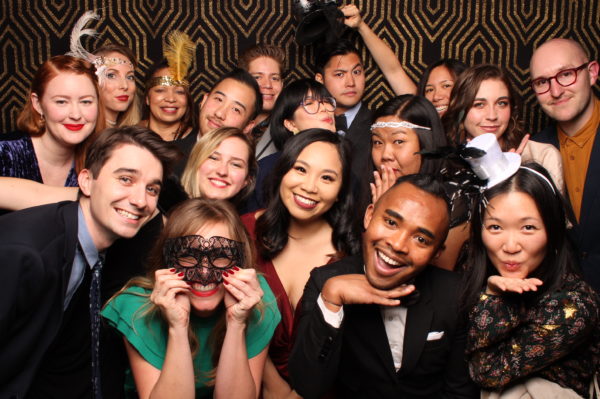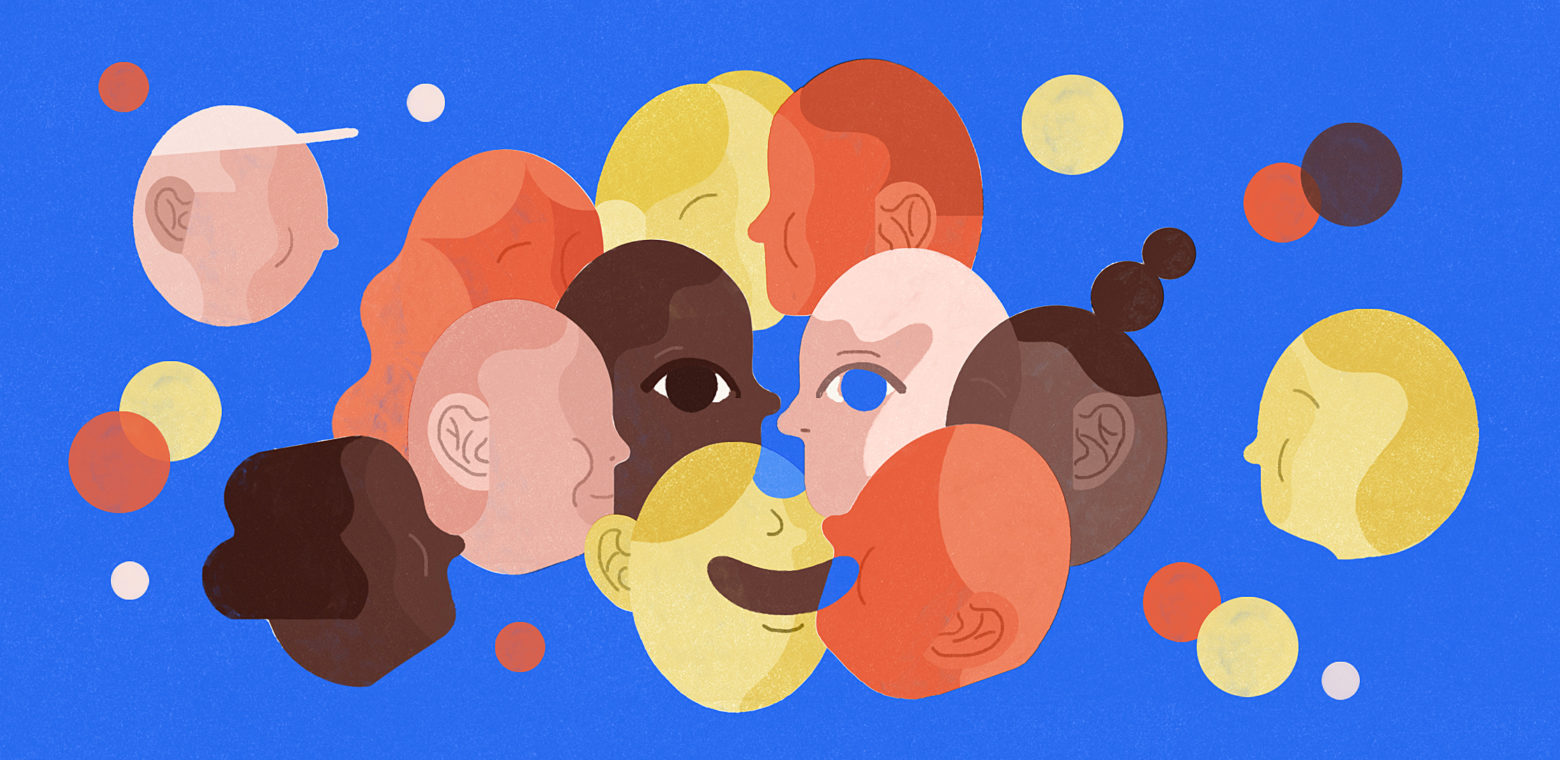Hint: It has a lot to do with simply having fun.
The Creative Team from Atlassian’s San Francisco office is one of a kind. They’re a large team of 22 people, and yet they act like a close-knit family. They always seem to be having a lot of fun together – and they produce amazing work.
Their secret? They focus on being a happy team, and everything else seems to fall into place.

“It has so much to do with an open way of working,” creative director Leah Pincsak says. “At Atlassian we say it all the time, but it’s true. When people are able to bring who they are to work, and work in an environment that supports them as a person, they’re happier.”
Our teamwork research proves this – teams that use an open work style are 80% more likely to report high emotional well-being and 60% more likely to report being effective and productive.
Here’s how the Creative Team does it.
How to build a happy team
1. Be real with people
This is especially important for managers, but it applies to everyone. Managers usually set the tone for a team, so if your manager is approachable and authentic, it helps you feel more comfortable being open and authentic, too.
“I wanted to make sure people knew that I made mistakes, that I had a personality. I wanted to set a tone that it’s a safe environment. I wanted everyone to feel like they belonged,” says Leah.
This approach is research-backed, too. A 2018 Harvard Business Review study showed that when managers can admit their failings (aka their humanity) on their path to success, they improve their overall reputation among their direct reports.
2. Get to know people – beneath the surface
Just as Leah opens up, she also makes space for her team to do the same. Last year, the team set aside time during meetings to share short get-to-know-you presentations about themselves, one by one. Leah made the prompt open-ended so that people could take it in whatever direction they wanted.
“People got really into it,” she says. “The presentations created a lot of empathy, and brought the team closer together. I could tell people spent a lot of time and had fun doing it. Someone even created a video, which was amazing.”
Now that all 22 have done the presentation, the Creative Team has started implementing a play from the Atlassian Playbook called My User Manual, which highlights useful information about teammates’ communication preferences, and how they like to work.
3. Let people know they are supported
Happiness researcher and New York Times bestselling author of Big Potential, Shawn Achor, studied students at Harvard University to figure out what makes someone thrive in a competitive and stressful environment like an ivy-league college.
“I found the greatest predictor of long-term happiness in a hypercompetitive environment was social connection – the breadth, depth, and meaning you perceive in your relationships,” Shawn says.
Leah believes that connection and feeling of support is the fundamental currency of any happy team.
“A team is a village; it needs to be self-supporting,” says Leah.
One of the ways people support each other on the Creative Team is by doing a play called Sparring, wherein team members bring their work in progress to their colleagues in order to get feedback. It’s a great way to get help if you are encountering a creative block, and it helps others feel invested in the work they’re giving feedback on.
“When I first started on the team, I was super nervous to give feedback during sparring,” says Robert, a brand designer. “I didn’t know anything about the enterprise SaaS space, but I was still invited to participate, and knowing people wanted to hear my thoughts meant a lot.”
Outside of the team’s encouragement, a supportive manager makes a huge difference, too. “When I joined I interviewed everyone on the team to ask if they felt they were being able to accomplish what they wanted to, and then I helped solve problems where I found them,” says Leah.
4. Find your team’s similarities
This tip is not about being the same. People often assume that members of a successful team must all be in the same life stage, have the same interests, and so on.
It’s about finding that thing that binds your team together. “Maybe it’s a sense of humor, or maybe it’s thoughtfulness,” Leah says, “but finding out what the whole team values in common is a great way to build up your team’s health.”
“People bond over what they believe in,” says Clive, a fellow designer on the Creative Team. “For us, we all really love being creative, so it naturally pulls us together.” Robert agrees. “It’s what ties us the most together – we have great pride in our work.”
5. …and support their differences
While having a common interest or goal is great, not everyone will be the same (nor should they be). The Creative Team recognizes this and invites people to come to the team as they are.
“We have singles, people with kids, people with 20 years difference in age and experience. Not everyone is expected to participate in the team’s culture in the same way,” Clive says. “People have different volumes they want to be at, so it’s important no one feels pressure to contribute like anyone else.”
6. Give everyone a voice
Research shows that people want to be able to share their ideas and contributions with their team at work. When everyone has a voice, they feel like they are important to the work being done, which supports an overall sense of happiness and satisfaction.
When Atlassian did its logo re-design a few years ago, Leah knew it would involve foundational work for the Creative Team. So she had everyone participate. They ran half- or full-day spikes where they’d set aside time to brainstorm and work together on what the brand logo system should look and feel like, where inspiration should be drawn from, and how it would grow over time.
“It was so empowering to feel like we were all part of the process,” Robert says. “And it was super inspiring to see that we could all contribute to such a big and important project together.”
7. Celebrate your teammates
Birthdays on the Creative Team are famous around the office. They go to crazy lengths to celebrate their team members, and others that they work closely with.
Clive loves boba tea, so for his birthday he got a boba-themed birthday, complete with a pin-the-boba-on-the-boba-tea game that the team created. For Megha, our Head of Brand, they threw a themed party based on Megha’s love of two very important things: her dog Wally and Taco Bell. And for Vania, our Work Life illustrator, they created a snapchat filter with her signature haircut and took selfies in her honor.
It’s so important to note: this fun tradition just happened. This wasn’t a manager mandate, but came out of a supportive and fun environment.
Shawn Achor agrees that team celebration is important. “In my work with nearly half the Fortune 100 companies, I’ve observed that whatever is celebrated gets repeated. When people skip the celebration of an accomplishment to get on to more work, a huge opportunity to reinforce the likelihood of repeating that win was lost,” he says.
8. Make time to have fun
It’s easy to get sucked into day-to-day work, but Leah prioritizes her team’s health.
“People wanting to be here is so much more valuable than traditional measures of productivity,” she says. “I want people to look forward to coming in to work every day. To know that we’re going to do great work and have fun doing it.”
One of the ways the team invests in themselves is in their super-active (and hilarious) Slack channel. In that room, anything goes. People talk pop culture, share their favorite internet memes, and drool over new restaurants they want to go to.
“If I’m heads-down all day, I lose creative energy,” Clive says. “Being able to jump into our chat room and just have fun with the team is a great break for me.”
The team regularly goes out for boba breaks or walks. Anyone is free to ping the Slack channel and get a small group together.
Some managers might worry about losing productivity with a purely fun channel, but the way Leah sees it, if it helps build better bonds and foster more empathy, then it’s productive.
9. Never stop building a happy team
There’s no finish line when it comes to fostering healthy team culture. Like the people on it, your team will always be changing, growing, and adapting.
But it should be easy to weather the changes, because everyone on your team will be happy to come into work. As Robert likes to say, “Everybody on the team contributes to the culture, because they love it.”
